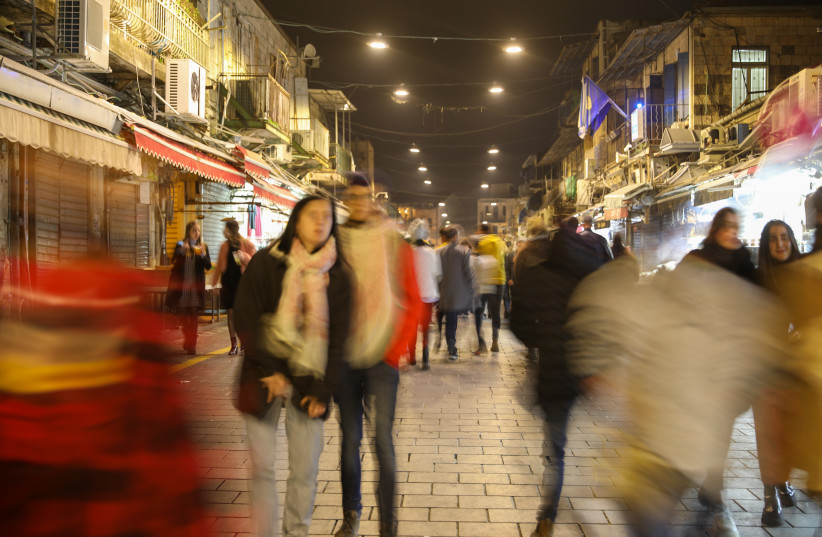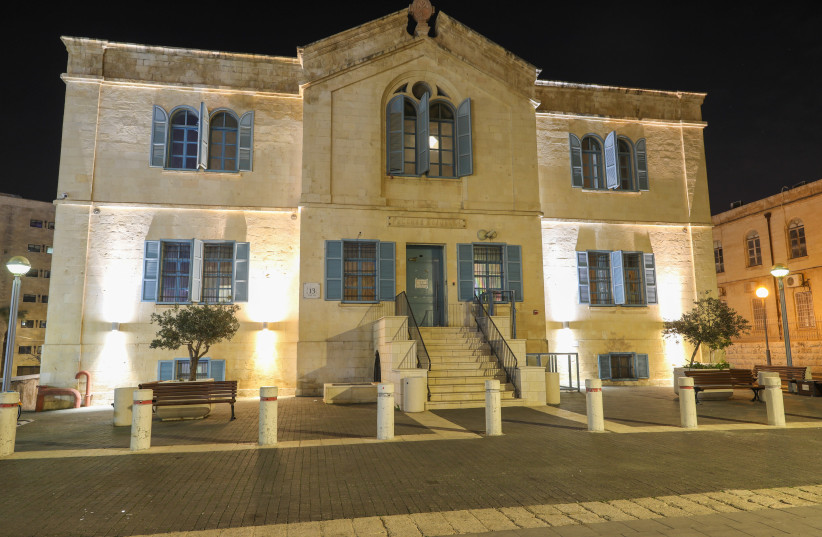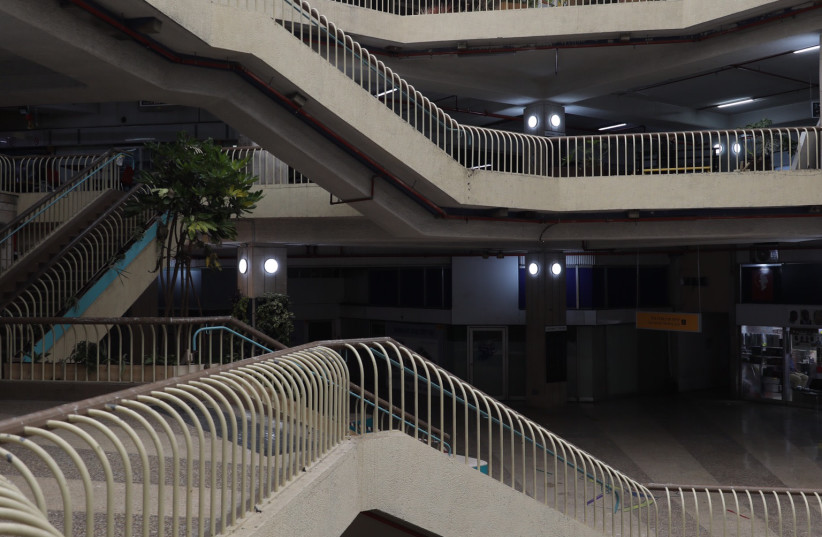The ancient city of Jerusalem has a history dating back thousands of years. Since its time as the site of the Binding of Isaac to being the city of the biblical Jebusites, followed by the Davidic conquest, the city has remained important and prominent in world history.
Empires have waged war over it, uncountable human lives were lost in the process. And arguably no other city in the world is as steeped in religion and spirituality than the Holy City.
And yet, there seems to be a lack of ghosts.
Most large and old cities around the world have their fair share of ghost stories and hauntings. These are usually rich in centuries of folklore and tradition, and consequently have become an established part of that city’s identity.
If one were to visit most old large cities in the US like New York, Savannah or New Orleans, there would be many haunted attractions with backstories steeped in the macabre for one to visit, as is the case in places like London. In fact, these have even launched the idea of ghost tours, commercializing the many spooky tales that haunt these cities.

And yet, Jerusalem is sorely lacking by comparison. Haunted and cursed sites are present in the city, but they are few in number – and even more interestingly, they are all very recent.
If one were to look into a few prominent haunted sites throughout the city, a few standout examples always come to mind.
And curiously, all of these supposedly cursed and haunted buildings are all very close to one another, right around the city center.
There is the Russian hospital, now part of the Jerusalem Municipality area in Safra Square. The hospital had once housed a funeral home and morgue, and many believe it is haunted by the dead.
This itself isn’t too unsurprising, as the association between a funeral home and morgue with the dead is rather inherent to the concept. Also adding to its overall haunting aura is the address, 13 Safra Square, being assigned a number associated in Western lore as being unlucky.
The building itself has a rich history, being used by Russian pilgrims in the 1800s and then being used by the IDF when it was renamed Avihayil.
Many workers have expressed having feelings of dread and foreboding as they approached the building. In one 2010 report by journalist Omri Maniv, one worker described the sensations as being akin to traveling the distance between death row to execution.

There is also the Dead Groom’s House. Built to be the home of a newlywed couple, the groom passed away before the wedding. This home is on Jaffa Street, Jerusalem’s most central street, but is still in use as the district office of the Health Ministry.
Another little-known legend involves the creation of Binyenei Ha’uma, the International Convention Center, across the street from the Jerusalem Central Bus Station.
Supposedly, a construction worker fell off and died during construction, and some say they still hear him.
ONE STRUCTURE on Agrippas Street, the Eini Building, has a compelling story. Constructed by Meir Eini in the 1960s, it was supposedly cursed by a kabbalist, Rabbi Mordechai Sharabi, over a dispute. Subsequently, apartments and office spaces failed to sell, and infamously, businesses continued to fail.
It also had the ignominy of having been the headquarters of the Kach Party, the far-right political party established by Rabbi Meir Kahane, which has since been banned and declared a terrorist movement.
In other words, the building has a far from positive reputation.
Is there any credence to the story of a curse, though? Well, the truth is complicated.
While many veteran Jerusalemites are aware of the story, it seems to have originated from a broadcast on Kol Ha’Ir radio. Apparently, journalist Dan Margalit had been the one to make up the story, as recounted on the official Nahlaot neighborhood website.
Is this true? According to a report on the matter by Israel Hayom, Margalit would later admit to fabricating the entire story as a joke.
But that is not to say the building is thriving despite this. Indeed, as noted on the Nahlaot website: Which came first, the legend of failure or the failure of legend?
While some businesses have indeed been able to stick it out, most haven’t been as fortunate, and the building is still shrouded in the myth of its own failure and curses.

ANOTHER BUILDING on the same street is also infamous for an unlucky reputation that many have attributed to the supernatural: the Clal Building.
Built in the 1970s as an indoor mall in an attempt to revitalize the area, the building was an absolute failure in this regard. Businesses that opened there almost always failed, and the mall soon became known as little more than a place for Mahaneh Yehuda vendors to use as a storeroom.
Rather morbidly, the building also became unfortunately very popular as a spot for those looking to commit suicide to jump off of.
So why was this building supposedly so unfortunate?
According to legend, buried within the foundations of this building is the corpse of a criminal, murdered by two others in some sort of criminal dispute.
But is this the reason for its failure? Probably not.
Indeed, a whole host of reasons can be attributed to the inability for the Clal Building to ever find success, such as poor location, bad planning, a number of better alternatives later opening around the city and, of course, being incredibly ugly.
And even then, it isn’t a total failure. There are still some businesses and offices in the building, albeit not nearly to the extent the planners would have liked. Indeed, it even continues to receive some manner of updates and has been renamed Clal Tower. But it is still reviled by many – even the architect behind it, Dan Eitan, along with many Jerusalemites.
LOOKING AT all of these examples, two things stand out. One, none of these locations is in the Old City, despite being the most ancient part of the city.
Two, all of these stories are extremely recent.
Indeed, despite the age of Jerusalem, not a single notable story of hauntings in Jerusalem dates back to before the 1800s.
So why is that?
Some attribute this to the religious nature of the city and its inhabitants.
In Judaism, there is belief in souls and the afterlife. Prohibitions put in place throughout rabbinic literature and even in the text of the Torah itself make clear on numerous occasions that supernatural abilities by sorcerers and witches are possible, as are the presence of spirits of the dead.
Rabbinic literature and mysticism take this even further. Curses can be laid by people, demonic forces exist and can be made to meddle in the affairs of humans.
And this doesn’t just extend to old places, but to more recent ones as well.
In one story in Safed, there was a curse on the HaAri Synagogue, named after the Arizal, Rabbi Isaac Luria, a famous kabbalist from the 1500s. In this synagogue, there was a room where the Arizal was supposedly visited by the prophet Elijah.
And legend had it that anyone who entered that room would die.
However, this curse was supposedly ended by Rabbi Yisrael Abu Hatzeira, a legendary Sephardi rabbi and kabbalist known as the Baba Sali, who arrived at the synagogue and was able to make the room safe.
These legends are far more extensive in Europe as well. Ashkenazi Jewry has a rich tradition of supernatural powers in Judaism. Men known as baal shems, the most famous of which was the founder of hassidic Jewry, the Baal Shem Tov, would use mystical amulets for supernatural purposes. Demons like the dybbuk were said to possess people, and powerful kabbalists like the Maharal of Prague were said to have created golems through mystical means.
Jerusalem, however, doesn’t have this. Synagogues here are not haunted nor are they said to be cursed. The city has an abundance of places used as graveyards, but no tales of undead spirits. Countless people have fought and died for a number of reasons in and around the walls of the Old City, and yet all of them seem to rest in peace, not a single legend of their continued presence beyond the grave.
So: why?
“I think a certain amount of it is sort of a bandwidth problem,” explained Josh Levinson, a Jerusalem tour guide well versed in the history and complexities of Israel’s capital (https://www.facebook.com/joshwalksisrael). “Jews have a very neurotic relationship with the supernatural. It’s sort of built into our culture, but what’s the worst kind of impurity? A dead human body.”
Levinson gives the example of what is arguably the most famous ghost story in Jewish tradition, the necromantic summoning of the prophet Samuel’s spirit.
As described in 2 Kings, King Saul visits a woman with supernatural powers known as the Witch of Endor and asks her to summon the spirit of the already deceased Samuel. This is something that Saul is heavily criticized for, even when compared to everything else he did.
“Think about all the bad things Saul did,” Levinson said. “God said He’d let that go, but it was only the summoning of Samuel’s spirit that was said to be unforgivable.”
As Levinson noted, there are legends in the Bible of supernatural phenomena in and around the Old City from ancient times.
“You have the Angel of Death when the Assyrians come, you have the strange six-winged seraph who appears to Isaiah to turn him into a prophet, you have all these stories, but my sense is that there is just no more room for ghost stories here,” he said.
BUT IT should also be pointed out that there are more than just Jews in Jerusalem. The other religions here, Christianity and Islam, all have rich supernatural traditions of their own.
“We have so much supernatural stuff in the big three traditions here. We have angels and miraculous deliverances, the wrath of God, jinns,” pointed out Levinson, who also works as a mediator between Christian factions in the Church of the Holy Sepulchre.
But the Christians don’t have many legends of curses or ghosts in the city.
“I remember there was a house in the Old City no one would go in,” a Christian Quarter bodega owner recalled. “One time, somebody died inside, and then they said there are ghosts. And we were children, so nobody goes into that house.”
In addition, it should also be noted that graves in the Old City aren’t like most other places. In the Old City, many homes have graves inside them, a practice that, as Levinson explained, Jews picked up from the Muslims and which can be seen in other places, like the Balkans.
What about Muslims? Indeed, there are Muslims in the city who have stories of jinn, but these experiences tend to be more personal. Most are often uncomfortable discussing them, but the stories are very much there. One Old City resident, who did not wish to be named, described how he and his home were cursed by someone, and an exorcist had to be called.
But by and large, these stories are more personal, and are not like curses affecting buildings for hundreds of years like HaAri Synagogue in Safed.
Although Jerusalem is lacking in these types of ghost stories, to say it is lacking in the supernatural would be a major understatement.
Kabbalists can be found in many parts around the city, and kiosks and vendors selling amulets and other charms are everywhere. There is also a tendency by many to paint openings to buildings blue, which is seen as a way of warding off the evil eye.
Indeed, in a place with such a rich spiritual history and a reputation in the three major Abrahamic faiths for being a holy city, perhaps it is precisely this holiness that keeps the city safe from legends of curses, hauntings and the many things that go bump in the night. ■
